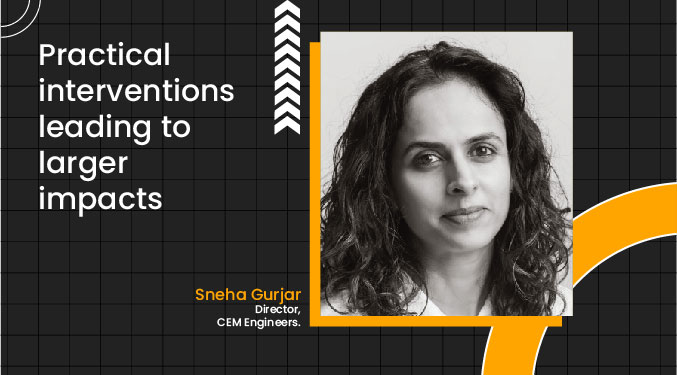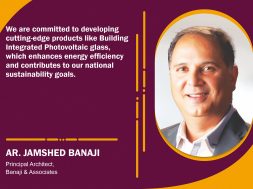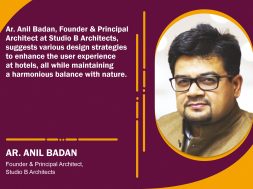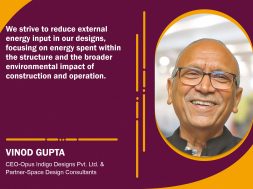Practical interventions leading to larger impacts

Sneha Gurjar, Director, CEM Engineers, speaks on the self-sustained township project at Assam, aiming to distinguish itself as a benchmark.

Why did you choose to specialise in hospitality projects?
The complexity and scale excite me regarding work and the impact that large-scale (infrastructure/urban design/public utility) projects can generate. India shall become the most populous country next year, i.e. 2023 and is expected to reach a total population of 1.5 billion by 2030. If we are to transform vision 2047 into reality, there is a long way ahead.
What was the initial idea for this project? How is this project impacting the urban and social environment?
We are already witnessing climate change and can see the infrastructure paralysed in our mega-cities like never before. Therefore, India needs to focus on developing regional hubs where growth and employment opportunities are available to curb the rapid urbanisation that our cities are already struggling to support. The self-sustained township project at Assam constitutes the supporting infrastructure. It aims to distinguish itself as a benchmark for providing a stable approach to the disrupted infrastructural development in various remote regions of the country.
Could you briefly describe the typology of this project and the challenges you faced while designing it?
We used to travel to the site by boat when we started working on this project. That was initially useful to sensitise and prepare the team for ground-level challenges faced in the northeast region. Apart from the logistical challenges of reaching the site itself, the material vocabulary, the impact of sourcing non-local material, and the long-term stack impacts of small design decisions were all learning experiences.

Technology and innovative ideas are a challenge when integrating into your work. How will the role of the architect change to take advantage of these new technologies?
The technology and tools available today aid in deliberate decision-making through an understanding of long-term behaviour and impact at all levels of the project — from design analysis to execution. The industry is experiencing a transition in its processes. Disruptors in the form of technology and ideas can be felt in how entire cities are imagined today. At a broader level, architecture in India is an industry where thoughtful consideration is not given to the work that is being done. The work that this industry churns out has a long-term impact on the built environment, how we engage with our cities, and a more significant environmental impact. This gives us enough reason that the choices than only economics, and decisionmaking should be more deliberate rather than frivolous. Technology provides us with that power today.
What is sustainability for this project?
Stacking simple and practical design interventions leads to a more significant impact over time in projects of this scale. In this project, sustainability is a balance of choices available to the inhabitant through deliberate design and engineering interventions.
66
Cookie Consent
We use cookies to personalize your experience. By continuing to visit this website you agree to our Terms & Conditions, Privacy Policy and Cookie Policy.









